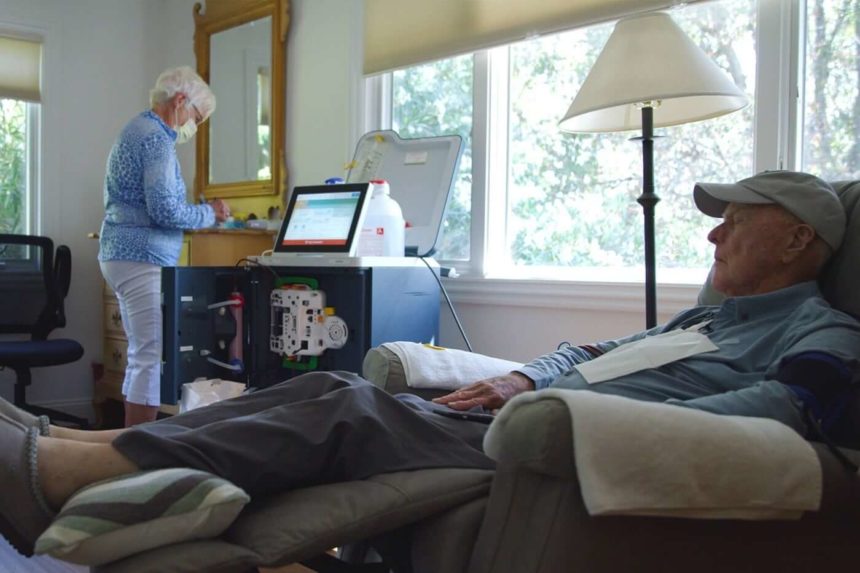
A new tool assessing patient experience could encourage more Americans with kidney disease to dialyze at home.
Matthew Rivara, M.D., and a research team at the University of Washington’s Kidney Research Institute developed the assessment tool and introduced it Tuesday in the Clinical Journal of the American Society of Nephrology (CJASN). The Home Dialysis Care Experience (Home-DCE) instrument is a 26-item patient-reported measure that helps clinicians gauge how patients are adapting to in-home dialysis and where they might be experiencing problems.
During surveys with patients, nurses and other care providers, Rivara and his team found consistent communication and care coordination are integral for successful in-home dialysis treatment.

“So much of the care being delivered to home dialysis patients is being delivered by phone. They’re only coming into the clinic once or twice a month. If they’re having issues at home, they need to have good responsiveness from staff by phone, by email or other electronic means,” Rivara told McNight’s Home Care Daily.
The Centers for Medicare and Medicaid Services (CMS) is pushing for more dialysis treatment at home in an effort to lower Medicare costs. In January, CMS launched the End Stage Renal Disease (ESRD) Treatment Choice Model (ETC), which aims to cut Medicare costs for dialysis treatment by $23 million over five years. About 37 million Americans have chronic kidney disease; roughly 800,000 have ESRD requiring dialysis.
Technology’s impact
In-home treatment provides dialysis patients more time flexibility, but only about 13% of people with ESRD currently dialyze at home. Rivara thinks that could increase to about 25% over the next few years due to Medicare’s new payment model and increased acceptance of telemedicine.
“COVID led to a revolution in telemedicine and I think we recognized that good care can be delivered remotely. When people dialyze at home, I can see them for clinic visits at home as well. Patients have told me it really increases their quality of life not having to travel,” Rivara said.
Patient input
Rivara said technology is also improving the experience for both patients and healthcare providers. There are currently two FDA-approved in-home dialysis machines on the market — NxStage and Tablo. Tablo — the newest entrant — was developed by San Jose-CA-based Outset Medical and was approved for home use a year ago.
Tablo incorporates new automated features. CEO Leslie Trigg told McKnight’s Home Care Daily the company got patient input when developing Tablo. “One of the big insights was how do we make it less manual? How do we use sensor technology and modern software? We had the privilege of designing in 2015 and 2016, so we were able to take advantage of all of these new technologies to help us automate,” Trigg said.
Trigg agreed with Rivara that ongoing improvement of the patient experience will be key in driving more dialysis treatment into homes. She thinks continued technology enhancements will help do that. “Maybe this device gets connected to other devices in the home. Maybe we create a community with other dialysis patients,” Trigg said.




